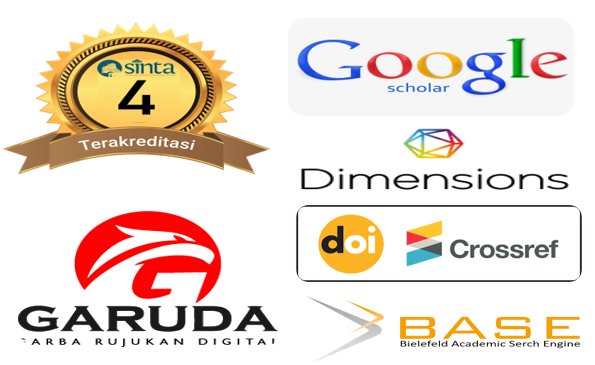The effect of ICT use on the classroom management in English teaching
Abstract
Keywords
References
Alavi, M., & Gallupe, R.B. (2003). Using information technology in learning: Case studies in business and management education programs. Academy of Management Learning and Education, 2(2), 139–153.
Basar. H., Yonetimi, S. (2011). Classroom Management. Ankara: Ani Yayıncilik.
Beatty, J.E., & Leigh, J.S.A. (2010). Taking stock of management education: A comparison of three management education journals. Journal of Management Education, 34(3), 367–392.
Bottino. R.M., (2004). The Evolution of ICT based Learning Environments: Which Perspective for the School of the Future?. British Journal of Educational Technology, 35(5), 553-567.
Brooks. In Search of Understanding the Case for Constructivist Classrooms, Alexandria, VA, USA, Association for Supervision & Curriculum Development, (1999), Retrieved May 1 (2013) from http://site.ebrary.com/lib/akdeniz/Doc.
Chambers and Bax. (2006). Making CALL Work: Towards Normalisation, System, 34(4), 465-479.
Daulay, S. H., Damanik, E. S. D., Wandini, R. R., & Rahmaini. (2024). STEM, robotics, mobile apps in early childhood and primary education technology to promote teaching and learning: edited by Stamatios Papadakis and Michail Kalogiannakis, 2022, Singapore, Springer Nature Singapore Pte Ltd., 624 pp., EUR 129.99 (hardcover), ISBN: 978-981-19-0567-4, EUR 106.99 (eBook), ISBN: 978-981-19-0568-1.
Debataraja, C. S., & Daulay, S. H. (2024). The Effectiveness of Rosetta Stone as Media to Increase Vocabulary Skill in EFL Senior High School. Jurnal Ilmu Pendidikan (JIP) STKIP Kusuma Negara, 15(2), 150-158.
Hudson, R. and Notman, H. (2001). Challenges of ICT Resourced Classes and Helpful Routines: Lessons from Teaching Practice, Computer Education, 99, 24-26.
J.J.F. McLeod and G. Hoover. (2013). The Key Elements of Classroom Management: Managing Time and Space, Student Behaviour and Instructional Strategies, Association for Supervision & Curriculum Development, Retrieved May 1 (2013), from http://site.ebrary.com/lib/akdeniz/Doc.
J. Mason. (2002). Qualitative Researching (2nd Edition). London: Sage Publications.
John, P., Sutherland, R. (2004). Teaching and Learning with ICT: New Technology, New Pedagogy, Education, Communication and In Information, 4(1), 101-107.
Kozma, R. (2003). Technology and Classroom Practices: An International Study. Journal of Research on Computers in Education, 36, 1-14.
K.W. Lai and K. Pratt, Positive to a Degree: The Effects of ICT Use in New Zealand Secondary Schools, Computers in the Schools, 24(3-4), 95-109.
Landen, M., (1997). The Role of Technology in Education and Training. Industrial and Commercial Training, 29(7), 230–235.
Lim, C.P., Pek, N.S., and Chai. (2005). Classroom Management Issues in Information and Communication Technology (ICT)-Mediated Learning Environments: Back To The Basics, Journal of Educational Multimedia and Hypermedia, 14(4), 391-414.
Marzano, R.J. (2013). Classroom Management that Works: Research-based Strategies for Every Teacher, Alexandria, VA, USA, Association for Supervision & Curriculum Development, Retrieved May 1 (2013) from http://site.ebrary.com/lib/akdeniz /Doc.
Nst, A. H., Daulay, S. H., & Dewi, U. (2023). Using Rosetta Stone Application as a Mobile Assited Language Learning (MALL) in EFL: Documentary Study. Scope: Journal of English Language Teaching, 8(1), 08-13.
Pasaribu, G. R., Daulay, S. H., & Saragih, Z. (2023). The implementation of ICT in teaching English by the teacher of MTS Swasta Al-Amin. English Language and Education Spectrum, 3(2), 47-60.
Punie, Zinnbauer, D. and Cabrera, M. (2006). A Review of the Impact of ICT on Learning, Working Paper Prepared for DG EAC, (2006), Institute for Prospective Technological Studies (IPTS), JRC, European Commission.
Selwood. I., and Pilkington. R. (2005). Teacher Workload: Using ICT to Release Time to Teach, Educational Review, 57(2), 163-174.
Schulz-Zander. R. Buchter and Dalmer. (2002). The Role of ICT as a Promoter of Students’ Cooperation, Journal of Computer Assisted Learning, 18, 438-448.
Smith and R. Laslet. (1993). Effective Classroom Management: A Teacher’s Guide (Second Edition). New York: Routledge.
Stottinger, B., & Schlegelmilch, B.B. (2002). Information and Communication Technologies in Tertiary Education: A ‘customer’ Perspective. Marketing Education Review, 12(2), 63–72.
Tondeur. J., van Keer. H., van Braak. J. and Valcke. M. (2008). ICT Integration in the Classroom: Challenging the Potential of a School Policy, Computers & Education, 51, 212-223.
UNESCO. (2002). Using ICT for Quality Teaching, Learning, and Effective Management: Report of the Seventh UNESCOACEID International Conference on Education, UNESCO, Bangkok, Thailand, 11–14 December.
Young. M.R., Klemz. B.R. and Murphy. (2003). Enhancing Learning Outcomes: The Effects of Instructional Technology, Learning Styles, Instructional Methods and Student Behaviour, Journal of Marketing Education, 25(2), 130-42.
DOI: 10.30595/lks.v18i1.19718
Copyright (c) 2024 Leksika: Jurnal Bahasa, Sastra dan Pengajarannya

This work is licensed under a Creative Commons Attribution 4.0 International License.
ISSN: 2620-4037

